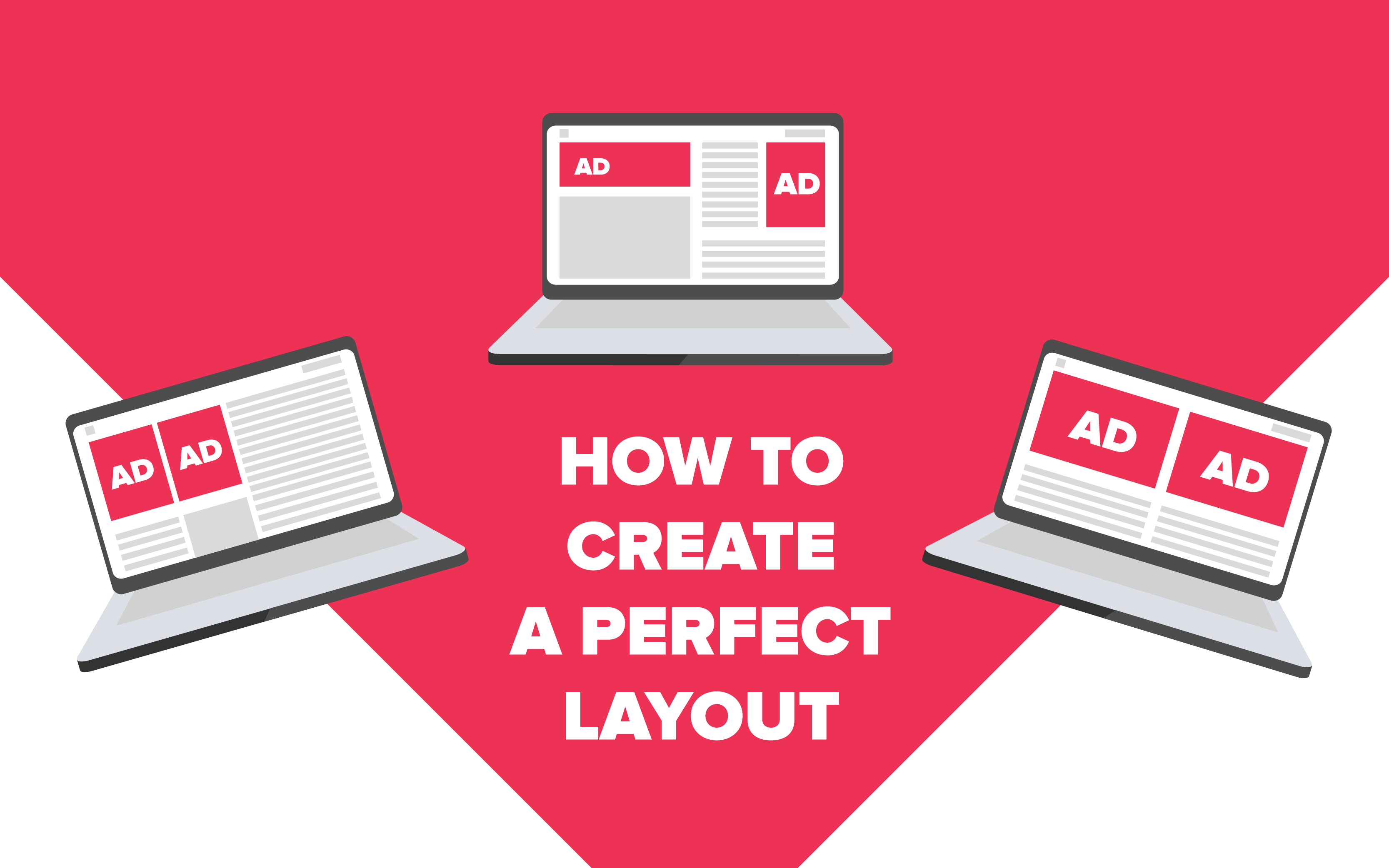How did Adwords change bidding at the end of 2023? (performance analysis)
What is AdWords? Google AdWords, now known as Google Ads, is an online advertising platform by Google. It allows businesses…

In order to find the best possible solution to this question, one must analyze users’ behavior whilst they are surfing the internet. Knowing certain patterns and rules, we can improve visibility and revenue without negatively affecting the user experience. How to structure a website? Check Ad structure best practices!
Research conducted by Nielsen Norman Group reveals that a positive UX is also important from a business perspective. Annoying advertising, in the long run, leads to a loss of users and their loyalty and in several cases, to a negative attitude towards the promoted brand.
Regardless of how the website looks itself, we can distinguish one main pattern of content browsing. This is a so-called “F-shaped pattern”, which took its name from the image that was obtained in an eye-tracking study. Thousands of pages have been analyzed using this method and the results came out quite clear: 80% of the users’ attention was devoted to the left side of the screen. This justifies placing key elements such as navigation, promoted content or ad units there.
The example of showcases where the user’s attention is focused. Ad units placed in this position have the highest potential of generating the best results.
The F-shaped pattern is the most natural and convenient way of browsing web pages. Taking a closer look, we can also conclude that the content is not read from the beginning to the end. Usually, the focus is placed on the first two paragraphs. The above can be expressed in percentage terms as follows: 79% of users skim a web page and only 16% of them read every word.
Analyzing the F-shaped pattern, the following question also arises: where to place Ads for them to be visible? To fully understand this, you need to get acquainted with the fold concept. The fold is the line that separates the visible part of the page from the one that requires action to be visible (e.g. scrolling). It’s a purely conceptual term; the fold itself can vary from one device to another. What is below the fold requires taking additional action. Not only physical action but also a mental one, e.g. realizing that some part of the content is hidden and making a conscious decision to see it. It seems trivial, however, it is confirmed in research. The thing that is sought for must be visible on top because hardly anyone scrolls to the end.
The heatmap above includes black lines that represent the user’s range of vision. It shows that the farther away from the upper fold – the less attention is paid to the displayed content. The study was conducted by the Nielson Norman Group on several websites, excluding search engine home pages and their results.
Offering a small amount of content at the top of a page to encourage scrolling can have a twofold effect. On the one hand, this may arouse interest but on the other hand, it may create the illusion of completeness. This illusion, also called “false floors”, gives the impression that the site is complete, although there is also some content below. Mobile websites are particularly sensitive to this because quite often you can come across large ad units on them (e.g. 300×600). In addition to discouraging the user from further scrolling, it also gives the impression of the end of an article or an announcement. The same outcome may be elicited by displaying several ad units in a row. It is worth notifying the user somehow that there is some more content below, e.g. in the way The Washington Post did by adding “keep reading” just above the ad.

The example of naszemiasto.pl shows an empty space under the last advertisement. Below, in the right column, there are two more articles and one advertisement but an unfilled space in the middle may suggest that there is nothing else there.
Example of the mechanism used by The Washington Post. ”Keep Reading” placed just above the ad suggests that below there is a continuation of the article.
In order to emphasize the importance of a fold, it is necessary to have a look at the research study conducted by Jakob Nielsen, a UX specialist. In his article entitled “Scrolling and Attention”, he claims that 80% of the attention of an average internet user is devoted to the content displayed above the fold. Only 20% is devoted to what is below. However, there is one exception to this rule: usually, the last element on the web page attracts special attention. According to the rules of psychology, it will also be remembered for longer than other parts.
Another important concept in online advertising is the so-called Banner Blindness, i.e. the tendency to ignore those elements of a website that are or resemble ads. This is not only a consequence of limited attention-grabbing opportunities but also of learned behavior.

Elements of websites typical for advertising, such as the right column or the upper part, where the banner is usually displayed, may be ignored. It should also be considered that elements of a website that are not ads but resemble them, may also be ignored along with all adjacent content. It is a kind of a defensive mechanism protecting the user from wasting time and focusing their attention on unimportant content.
There is no single effective solution that would reduce the scale of this phenomenon but since the website content is always given a higher priority over advertising, these should ideally be clearly distinguished from one another. This is not only important for the comfort of users but also essential from a business perspective.
To back this theory up, we need to look at the study carried out by Pandora Music, where listeners were divided into three groups. One of them, the control group, was served an average number of ads (3.6 ads per hour of listening). The second group listened to a lower number of ads (2.7 ads per hour) and the third group – a greater number of ads (5 ads per hour). The data was collected for over 18 months and during this period both experimental groups were compared to the control group.

After a short period of time, a slight decline in listened to music by the users from the third group was observed. It was only 0.4%, however, after a year, the results were very much different. In the group with a reduced number of ads, 1.7% more hours of played music were recorded than in the control group, while in the group with the highest number of ads, 2.8% fewer hours of played music were recorded. This does not translate 1:1 into web pages, but it does give a general picture of what to expect from worsening the UX.
In addition to the above, an important element that affects the design of the Ad structure is the Coalition for Better Ads formed, among others, by Google. Its aim is to maintain a balance between advertising and user experience by blocking the most intrusive ads. Upon surveying over 25,000 users, new rules were formulated under Better Ads Standards.

It is worth consulting the exact rules on the official website of the coalition but the most important points include pop-up ads, automatically playing sounds and large sticky ads. On mobile devices, the mandated ratio of advertising to content is 1:3, calculated over the total length of an article, excluding headlines, footers, and recommended articles. As a rule, the new rules prohibit the use of advertisements that somehow obscure content or restrict access to it.

Karol Jurga
Chief Revenue Officer
See it in action.